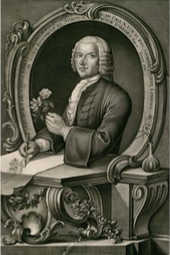By Topsy Flowers; gathering tales about the beauty of flowers!

Georg Dionysius Ehret was one of the most famous botanical illustrators of his time. Born in Germany, in 1708, he became famous for his work with botanist Carl Linnaeus, who developed the classification for all living things. In 1736 he moved to England to visually record the collections of leading botanists.

Gardenia jasminoides Ellis Plumeria rubra L. Selenicereusgrandiflorus
His work shows enormous attention to detail, and are real works of art in their own right. It is no wonder that today he is regarded as one of the best botanical illustrators of his day, if not of all time.
Ehret was keen on illustrating what would then have been exotic plants, many would never have been seen before in England. These species would have been brought back from far flung places, mainly by wealthy plant devotees.

The job of a botanical illustrators was to depict a species in its true form and colour, with all its apparent detail included. The key was to be highly scientifically accurate. It wasn’t just about producing an artistically pleasing piece of art, it was about providing the scientific community with something that was meticulously precise. Ehret, however, managed the duality of scientific authenticity and exquisite works of art.
In 1748 he published ‘Plantae et Papiliones Rariores’, described at the time as “an odd hybrid publication”. It presented species in what was thought of as a highly unfamiliar way, such as bouquets!
He has left a fantastic array of drawings in England, which can be viewed at The Natural History Museum, The Royal Botanic Garden at Kew, The Royal Society, The Royal Horticultural Society’s Lindley Library and The V&A Museum

